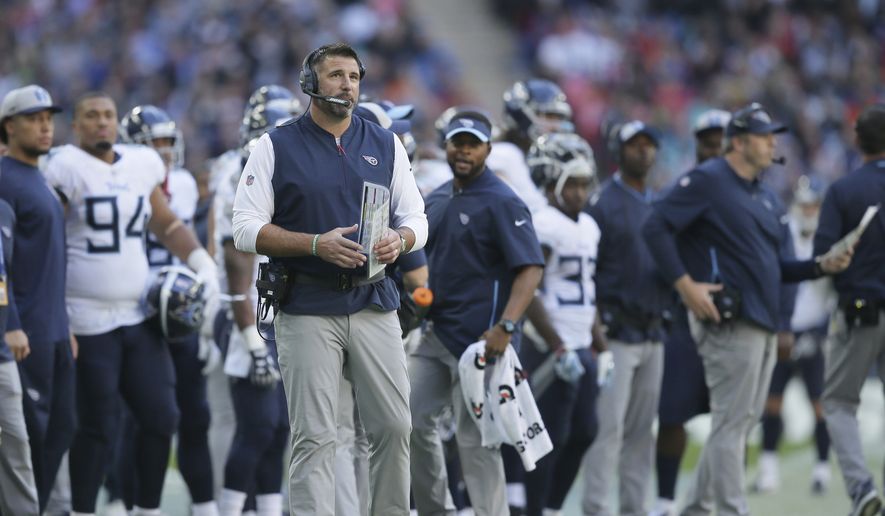In the NFL, scared money doesn’t make money

By DERON SNYDER (as published in The Washington Times)
Old habits die hard, even when we hate them and clamor for their demise. No matter how much we complain and wish they didn’t exist, we often find ourselves embracing and repeating them, over and over and over again.
Take, for instance, the decision to kick extra-points instead of attempt two-point conversions.
For years we’ve criticized coaches for being too conservative, too risk-averse. We’ve advocated that they “go for it” more frequently, whether “it” is a fourth-down conversion or double points after a touchdown.
But deep down, many of us are scared. The consequences of failure make us quiver, even though the only thing riding on the outcome for us is emotion. Conversely, coaches can put their job and career on the line when they buck conventional wisdom instead of staying safely ensconced in the herd.
Many observers excoriated New York Giants coach Pat Shurmur for attempting a two-point conversion late in the final quarter Monday night while trailing Atlanta by eight points. ESPN’s broadcasters hated the move and so did much of the Twitterverse. They thought a kick to pull within seven points was the right call.
Let’s suppose Shurmur did that, and the Giants scored another touchdown with mere seconds left on the clock. Would those same critics suggest kicking an extra point to force overtime? Or would they applaud Shurmur for going for two – and the victory – to end matters right there?
Despite Herm Edwards’ famous protestation, playing to tie the game has long been standard operating procedure among coaches. Kick the extra point and take your chances in overtime. Instead of attempting to score from the 2-yard line, flip a coin at midfield and see what happens next.
On Sunday, Tennessee coach Mike Vrabel decided to forgo heads or tails after the Titans’ scored a touchdown to trail San Diego, 20-19, with 31 seconds left. The two-point conversion failed and that was the ballgame. Granted, Tennessee needs to work on its execution down there (the Titans have failed on seven consecutive two-point attempts since 2015), but Vrabel deserves credit for trying to snatch a victory that was so close.
“I love the call, everyone in this locker room loved the call,” wide receiver Tajae Sharpe told reporters afterward. “We wanted to be aggressive no matter what, and that’s what we did. Unfortunately, it just didn’t go our way.”
The correlation between two-point attempts and wins/losses is easy to see when a team trails by one point in the closing seconds. But the calculation that Shurmur used – down 14 points before Saquon Barkley scored with just under five minutes remaining – is perfectly clear, too.
“We’ve discussed, internally, the math on that,” Shurmur said after the game. “You increase your chances by 50 percent if you go for it and make it there. … Because then is we score a touchdown, we just kick the extra point and win.”
As the Baltimore Ravens can attest, successful extra-point kicks aren’t a given. Likewise, replacing entrenched behavior with geeky analytics can be a hard sell among football’s brawn trust. I’m paraphrasing here, but ESPN analyst/former NFL defensive tackle Booger McFarland essentially said stick percentages where the sun doesn’t shine. “Bad coaching decision by Pat Shurmur,” he tweeted after the game.
A lot of folks don’t like math, but numbers are unemotional. According to ESPN research, teams that trail by 14 points and go for a two-point conversion after its next touchdown have a roughly 60 percent chance to win if they score again. Teams that trail by 14 points and kick two extra-points have a 45 percent chance to win.
Coaches can be overly aggressive – I’m thinking Indy’s Frank Reich going for it on 4th-and-four from his side of the field with 27 seconds left in overtime. But mostly they’ve been like Dallas’ Jason Garrett, whose ultraconservatism and lust for overtime contributed to losses against Washington and Houston.
On Sunday, trailing by three points, the Cowboys reached Washington’s 31 with a dozen seconds left and a timeout remaining. Plenty of time to take a shot at the end zone, but Garret had a different idea, calling for a run up the middle. “Once we got down to that point,” he explained afterward, “the biggest thing we wanted to do was maximize the field goal opportunity and run the ball, make some yards, use the timeout and then kick the game-tying field goal.”
We all know how that worked out. But imagine if that was your team and the halfback took the handoff all the way to the 2 with one second left. Would you want them to go for the win, or force overtime? A significant measure of intestinal fortitude is necessary to choose the former, and not everyone has the requisite amount.
Sometimes the question comes earlier, in the form of two-point conversion attempts with five minutes left in the game. Same decision, different scenario. More coaches are choosing to go for it, following the lead of Super Bowl champion coach Doug Pederson.
We aren’t there yet, but maybe one day it won’t be considered controversial at all.
— Brooklyn-born and Howard-educated, Deron Snyder writes his award-winning column for The Washington Times on Tuesdays and Thursdays. Follow him on Twitter @DeronSnyder.
 Follow
Follow
